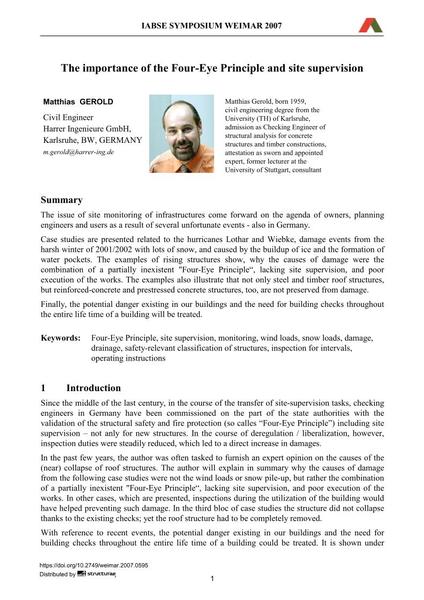The importance of the four-eye principle and site supervision

|
|
|||||||||||
Bibliographic Details
| Author(s): |
Matthias Gerold
|
||||
|---|---|---|---|---|---|
| Medium: | conference paper | ||||
| Language(s): | English | ||||
| Conference: | IABSE Symposium: Improving Infrastructure Worldwide, Weimar, Germany, 19-21 September 2007 | ||||
| Published in: | IABSE Symposium Weimar 2007 | ||||
|
|||||
| Page(s): | 472-473 | ||||
| Total no. of pages: | 8 | ||||
| Year: | 2007 | ||||
| DOI: | 10.2749/weimar.2007.0595 | ||||
| Abstract: |
The issue of site monitoring of infrastructures come forward on the agenda of owners, planning engineers and users as a result of several unfortunate events - also in Germany. Case studies are presented related to the hurricanes Lothar and Wiebke, damage events from the harsh winter of 2001/2002 with lots of snow, and caused by the buildup of ice and the formation of water pockets. The examples of rising structures show, why the causes of damage were the combination of a partially inexistent "Four-Eye Principle“, lacking site supervision, and poor execution of the works. The examples also illustrate that not only steel and timber roof structures, but reinforced-concrete and prestressed concrete structures, too, are not preserved from damage. Finally, the potential danger existing in our buildings and the need for building checks throughout the entire life time of a building will be treated. |
||||
| Keywords: |
snow loads damage wind loads monitoring Drainage Four-Eye Principle site supervision safety-relevant classification of structures inspection for intervals operating instructions
|
||||
